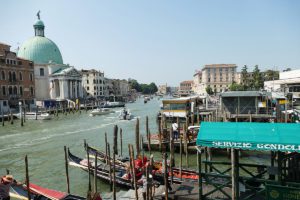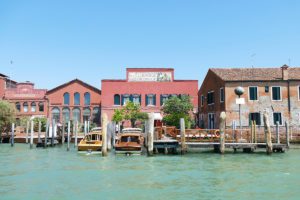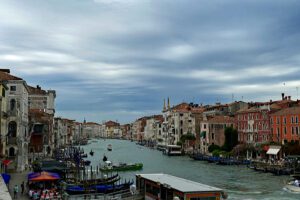There’s no question about it: Venice is absolutely magical. Strolling between the canals and over countless bridges. Losing yourself between majestic palazzi and gazing dreamily after the gondolas.
However, despite its ancient charm, Venice keeps you on your toes, and a visit can also get quite stressful. The masses of tourists, the queues, the pushing and the shoving at the jetties. In the summer there is also the heat.
Therefore, if you have the chance, it’s definitely worth adding one or two days extra to spend on one of the beaches off the Veneto shores.
Let me assure you: Pampering yourself with a day full of dolce far niente, hence, sweet idleness, will recharge your batteries and get you fit so that you can joyfully plunge back into the hustle and bustle of Venice.
Don’t know where to spread out your beach towel?
No problem: In this post, I’ll introduce you to the three best beaches that you can reach quickly and easily by public bus or the iconic water bus Vaporetto from Venice.
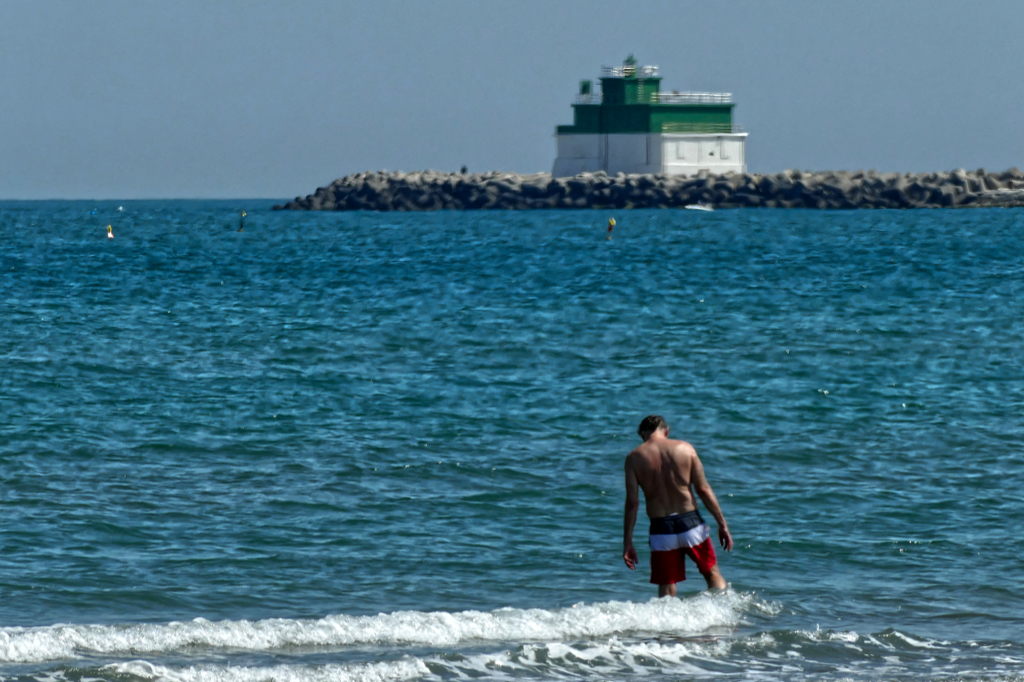
Veneto’s Beaches
Veneto, located in northeastern Italy, is known for its diverse landscapes, including some beautiful beaches along the Adriatic Sea. Whether you’re looking for a developed beachfront with good infrastructure alongside a lively coast town with plenty of entertainment or a serene’n’secluded natural beach to relax and enjoy nature: Veneto offers a diverse range of beaches to suit all preferences. However, since this post should help you escape the hustle and bustle of Venice’s Centro Storico, I assume that you’ll be looking rather for a Robinsonade than for a Spring Break destination. If so, we have a clear winner, and that’s the Lido di Venezia.
Lido di Venezia
Lido di Venezia is located on an island just off Venice’s Centro Storico. The beaches here are sandy and well-kept, offering a quiet retreat in close vicinity to Venice’s historic attractions.
In 1855, Europe’s first public bath was built on the island. The Lido became famous as the epitome of beaching’n’bathing. In the late 19th century, the construction of the Porto di Lido, the island’s jetty, was completed, and since then, Venice’s Vaporetti brought visitors quickly from San Zaccaria in the Centro Storico to the Lido.

Especially during the annual film festival, the rich and the famous from all over the world can be spotted on the island. Hence, the Lido di Venezia offers some excellent lodging options, private beaches, and fine dining.
Beaches on the Lido are suitable for everyone: As they are gently sloping into the Adriatic, even the youngest children can frolic and bathe carefree. Various dams and other protection programs are shielding the bathing area from rough waters. However, surfing and other water sports are also quite popular on the beaches of the Lido.

Regulars and long-term visitors can rent a so-called capanna, a small beach cabin. But you can also lease deckchairs, beach umbrellas, sun loungers, and other stuff that makes a beach day comfortable and fun. It won’t surprise you that all those goodies come with a price tag. For instance, an umbrella and two chairs set you back around 25 €uros per day.
But fear you not, the Lido also has large areas of free beaches. They are nice and clean but can get quite busy especially on weekends and during the high season. Some of the nicest free beaches are actually pretty close to the Santa Maria Elisabetta Vaporetto jetty. While you have to bring your own beach towels and possible refreshments, there are still bathrooms and showers you can use for a fee.
Nature Wild And Free
While I enjoy a bit of infrastructure and even don’t mind spending money on a lounger and an umbrella, I’m really not fond of those thoroughly organized beaches where you can hardly see the sand for the sunbeds. Unfortunately, those are very popular in Italy.
This is the reason why for me, the Lido di Venezia takes the cake: Apart from well-organized resort-like beaches, there are some untouched stretches with dunes, beach grass, and driftwood.

The most beautiful one lies in the Lido’s south. Alberoni is the perfect place for visitors who are looking for a quiet spot as it is a protected natural reserve.
You can get to Alberoni either by public bus A from Piazzale Santa Maria Elisabetta to the stop
Alberoni Stella Maris. Or you rent a bike in the center and cycle down the western shore along the Via Malamocco. Either way, to reach the beautiful, wild beach, you have to cross a small pine forest and some dunes.
Lido di Jesolo
“When I was a child, my family went on a really long vacation in Jesolo”, says my friend Kitchenkraut. “And you know what, it’s unbelievable, but we didn’t go to Venice once!” She’s right, it’s hard to believe. Especially since Venice can be reached from Lido di Jesolo in around an hour. But so be it.
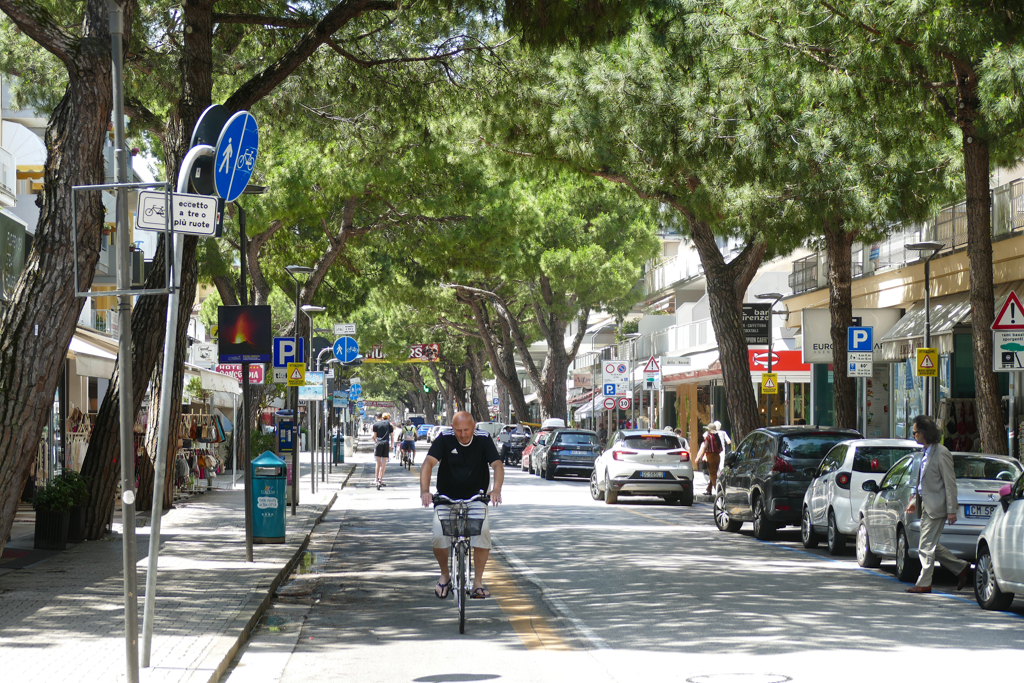
As a matter of fact, Jesolo ranks second among beach resorts in all of Italy and incredible 8th as a tourist destination, right behind the major tourist magnets like Rome, Venice, Milan, and Florence.

Yes, it’s true: I’m not fond of beaches that look like sickbays with stretchers standing side by side. For my taste, Italian beaches tend to be too packed. I have the impression that Italians don’t mind physical closeness as much as I do as a northern European.
This being said, these organized beaches come with some great perks, obviously: Beaches in Veneto are generally well-equipped with amenities such as sunbeds, umbrellas, showers, and lifeguards.
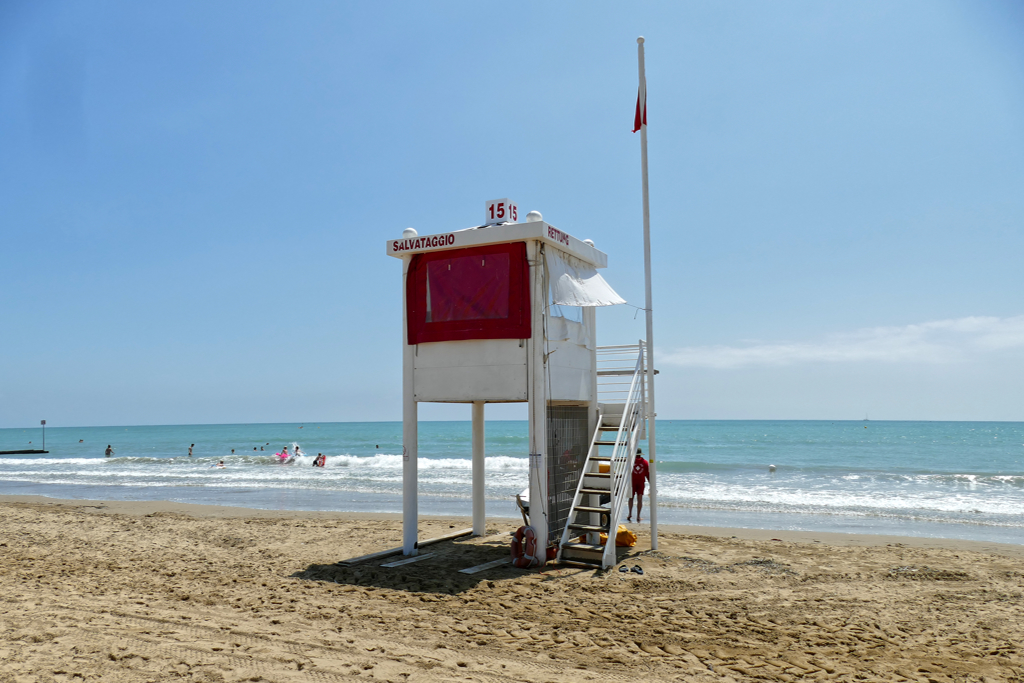
If you don’t want to fork out at least 17 €uros for a lounger and an umbrella, you can spread your towel on narrow stretches of sand between the organized parts. You can also make yourself comfortable in front of all the stretchers close to the water but this prime location bears the risk that one of the bigger waves splashes or even soaks all your stuff.
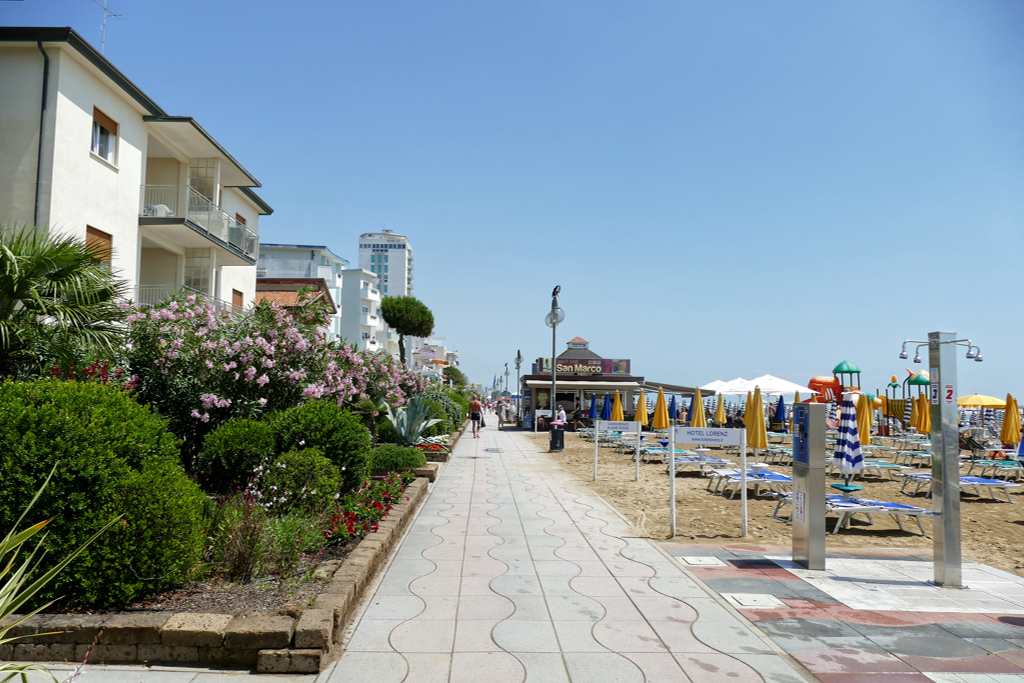
Lido di Jesolo stretches over 15 kilometers. Although at times, there are some big waves, the beach at Jesolo is rather safe even for smaller kids as it gently slopes into the waters. If you should get tired of just sunbathing and swimming, you can break a sweat by playing for instance beach volleyball or engaging in some water sports.
Say It Right
So, is it Djesolo or Yesolo? Well, both: The Italian version is Yesolo, Venetians call it Djesolo. Hence, take your pick.
Sottomarina
Sottomarina is part of the Chioggia district. The city is best known for its long sandy beach and lively summer atmosphere. While you can do water sports and play beach volleyball on the organized main beach in addition to lazing in the sun and swimming, the northernmost part around Diga is also popular for fishing. A walk here is definitely worth it, as Diga is much quieter.

The parasol rental here is very well organized, and I particularly liked that it wasn’t a problem to rent just a single lounger. That wasn’t possible on the beach in Jesolo where I had to lease the whole set of two loungers and an umbrella for a price that was far too high.
In Sottomarina, a single lounger with an umbrella costs 12 euros for the day. Not exactly a bargain, but still okay. Also, they have changing rooms, clean toilets, and freshwater showers. You can get snacks and drinks in the beach restaurant. Or you can stock up beforehand in the supermarket right at the entrance to the beach, which is what I did.

The neighboring town of Chioggia with its canals, especially the Canale Vena, and the characteristic narrow streets is often called Little Venice. Although there are some alluring corners in Chioggia, I would only visit if, for whatever reason, I didn’t have the opportunity to go to Venice.
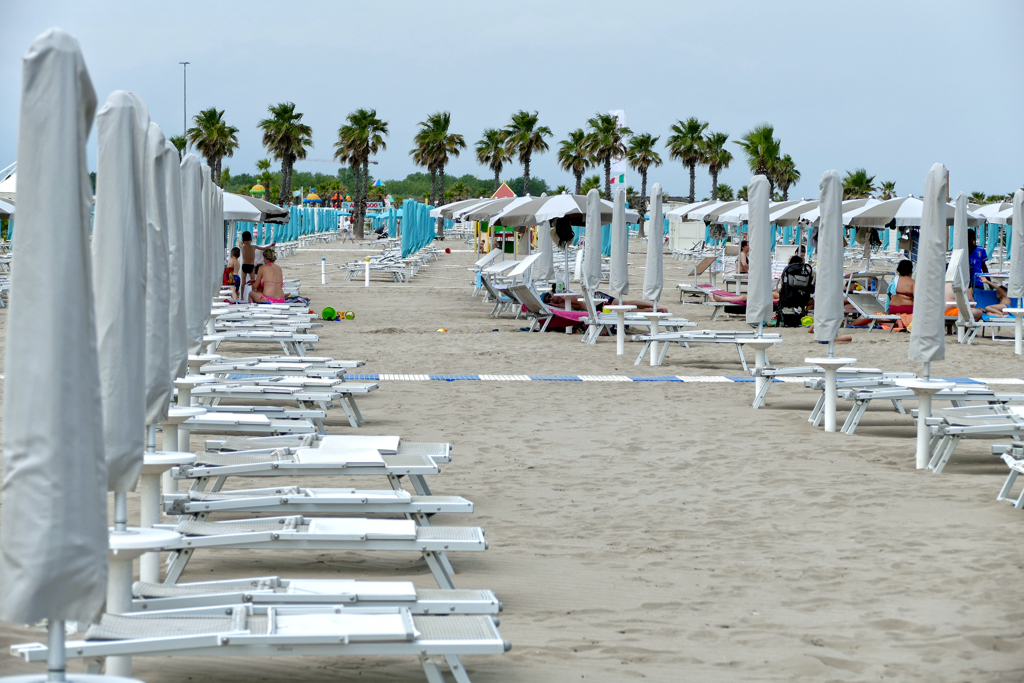
If you’re coming here to escape Venice for a day, strolling through a miniature Venice certainly doesn’t make much sense.
Say It Right
Oh, Chioggia is a wonderful word to clarify once and for all how C and G are pronounced in Italian:
As in any other Romance language, C is hard when written before A, O, and U, hence, it’s pronounced K. Examples: casa = kasa – house – or cosa = kosa which means thing.
If followed by E or I, it’s tch as in witch. Examples: cena = tchena – which is dinner – or cino = tchino – Chinese. By the way, it makes no difference if there is on C or two.
Now, if a C followed by E or I should be pronounced K, an H is added: bruschetta, zucchini, Chioggia– brusketta, zukkini, Kioggia.
On the other hand, if C followed by A, O, or U should be pronounced tch, they slip a – silent! – I in: ciocolata, ciabatta – tchocolata, tchabatta – forget about the I in-between.
The same rules apply to the letter G. If followed by E or I, it’s pronounced like in the word judge. If it’s followed by A, O, or U, it’s pronounced like the G in guitar, hence, hard: Lago di Garda. To make it sound hard in front of an E or I, a silent H is added: traghetto or ghirlanda.
On the other hand, to make a G sound soft in front of A, O, or U, they slip a – again: silent! – I in: giardino, Chioggia– djardino, Chiodja.
If you now apply the two rules in bold together, you’ve got it right: Chioggia = Kiodja
10 Things To Pack For a Beach Day
When you stay at a beach hotel, you can simply walk from your room to your sun bed in a swimsuit, a book and a cocktail in hand. In that case, kudos – and you won’t need this checklist. If however, you intend to visit a more remote beach by bus, you might wanna put a bit more thought into what to pack for the day. Keep in mind that you’ll leave your accommodation in the morning and then return only in the late afternoon. If you forget to take certain things with you, you won’t have them available during the entire day, it’s as simple as that.
Therefore, the below list contains not only quintessential items like your wallet and your reading glasses but also some gadgets that are not crucial but will make your day on the beach more comfortable and pleasant.
1. Wallet and Keys
Sometimes it’s the most evident stuff that we tend to forget. While you are focusing on your swim goggles, you realize that you left your wallet in the room only the moment you need it. Therefore, the most important item is your wallet with some cash, one credit card for emergencies, and some form of ID. I’m emphasizing taking only one credit card for security reasons. If you should lose your wallet or if it gets stolen, you’ll still have your other cards safely in your room.
Oh, and don’t forget to take your keys before you slam that door. I’m always having a noticeable lanyard with me that I attach to my holiday apartment key during my entire stay. Maybe this idea works for you, too.
2. Sun Protection
I’m very cautious with the sun. Therefore, I apply a thin layer of sunprotection to my entire body before I even leave the house and then re-apply more at least once on the beach.
In summer, I recommend always having a small bottle of sunscreen with high SPF on you. Also, don’t just carry it around, but use it.
3. Beach Towel and Possibly an Extra Towel
Whether you’re leasing a beach chair or intend to stretch out in the sand, you need a beach towel. However, I like to have also a smaller towel with me just in case. Apart from serving its original purpose, it can also be folded or rolled into a small pillow.
4. Swim Suit and a Spare
When I’m planning on spending the day on the beach, I put on my swimsuit underneath my clothes. If you do that, too, don’t forget to pack either some underwear or simply a second bikini so you can change and don’t have to spend the day in wet swimming clothes after a refreshing dip.
5. Sun Shades and Possibly Reading Glasses
In the bright sunlight on a white beach, sunshades are not a fashionable accessory but an indispensable necessity.
If you need reading glasses, you probably have also sunshades with the visual acuity you need. If not, don’t forget your regular glasses since you don’t want to schlepp that big novel in vain.
6. Sun Hat
Just like you don’t need shades just to be trendy, a sun hat is not only a fashion statement. Especially if you’re planning on walking down a beach for a while, not covering your head can become truly dangerous. Choose one with a quite wide rim to really protect your face.
If you lease a beach chair, it always comes with a parasol, hence, you’re covered.
Actually, I was mostly exposed to the sun by walking around.
7. Book and Earplugs
Forgetting your book won’t ruin your day trip. However, it’s annoying to find yourself on a beach where you could comfortably enjoy a good read only to realize that you’ve left it behind.
Also, if you rent one of those sun loungers that are placed quite close to each other, your neighbors might be listening to music on their phones without using headphones. My neighbors even had a small speaker which was surprisingly loud for its size. If you don’t want to listen to your neighbors’ music, make sure to pack some earplugs.
8. Mobile Phone with Head Phones
Your mobile phone is definitely something you should have on you at all times. You can quickly snap some pictures of great scenery, listen to your favorite playlist, check the bus schedules – and call for help. Although I hope the latter will never be necessary, I know from my own experience that your phone should be ready to save you at any time.
Now, the headphones. I know that there are people who hold extensive conversations on speakerphone in public places. Or who watch movies or listen to music as if the world was theirs alone. I mentioned that already above. It can get really annoying. So if you are not all by yourself in a secluded spot, please, use headphones.
9. Storage For Valuables
On those organized beaches, you cannot always choose your lounger’s location. In Jesolo, for instance, the spots close to the water cost about double those further back. That means that as a solo traveller, you have to leave everything – including your valuables – unattended.
There are various kinds of pouches that store your money, credit card, ID, phone, and the like. As those containers are waterproof, you can have all your valuables on you even in the water. Yet, I’m not a big fan since I simply don’t feel comfortable carrying all that stuff with me while swimming. Also, one of my most precious items is a camera that doesn’t fit in any of those containers.

Therefore, I’m using a mobile safe. That’s a bag reinforced with a metal web that cannot be cut open. Also, it is secured with an iron string and a padlock. Then, you need a post to attach the safe firmly. Even the frame of a sunbed will do as it is improbable that someone will run away carrying an entire lounger.
10. Snacks and Drinks
This is totally optional since there are at least convenience stores if not supermarkets in close proximity to the beaches, hence, you don’t need to schlepp all those goodies all the way from Venice. Also, there are snack bars and restaurants so you don’t need to worry about a supply of refreshments.
What Do You Have to Add?
I would love to know you but obviously, I don’t.
Therefore, I might have missed listing something that you urgently need to enjoy a careless day on the beach.
What is it?
I’d be pleased if you shared it with me and the other readers in the comment section below!
Well-Organized Activities
While Kitchenkraut’s family spent their entire vacation on the beaches in Jesolo, you might want to dry yourself off and go on a day tour. Therefore, here are some great activities to choose from*:
Map
This map should help you to find the three beaches in the Veneto region that I’m introducing in this post. Clicking on the slider symbol at the top left or the full-screen icon at the top right will display the whole map including the legend.
Guides to Venice and other Destinations in the Veneto Region
Do you need more travel ideas and tips for Venice and the Veneto Region? I have you covered:
Take a Break: The Three Best Beaches You Can Easily Visit From VENICE
VENICE on a Budget: When to Go, Where to Stay, What to Eat, And Much More
How to Visit the Biennale di Arte in Venice in 2024
Day Trip to the LIDO di VENEZIA. Breaking Away from Venice
TORCELLO – a church, a bridge, and 15 residents
A Day on MURANO: It’s a Crystalline World
50 Most Beautiful Palaces in Venice
Day Trip from Venice to Padua
Pinnable Pictures
If you choose to pin this post for later, please use one of these pictures:
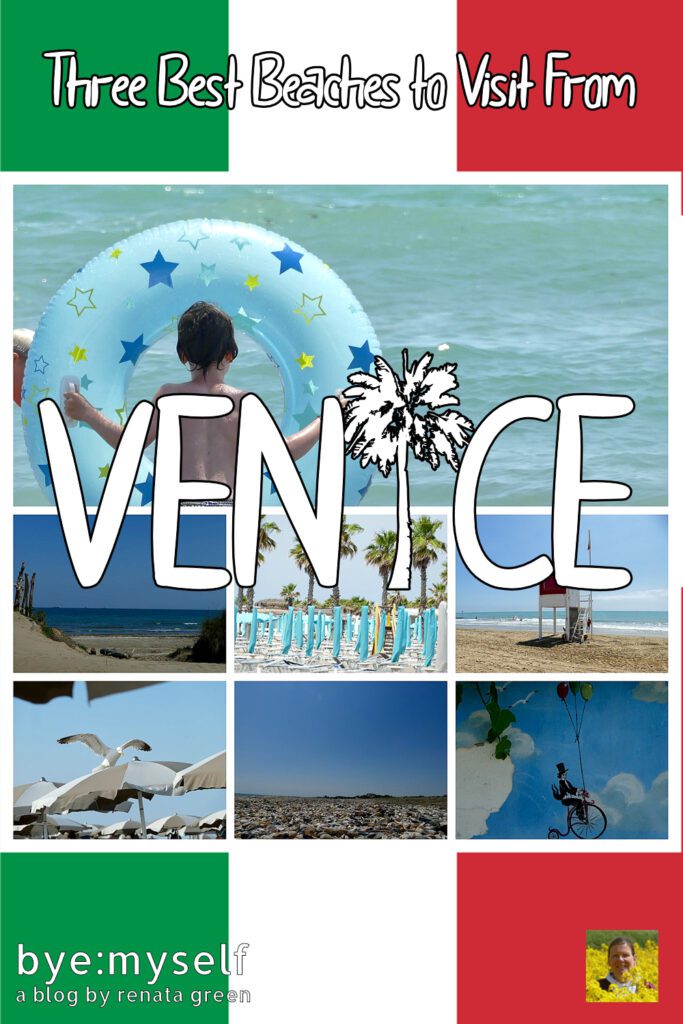
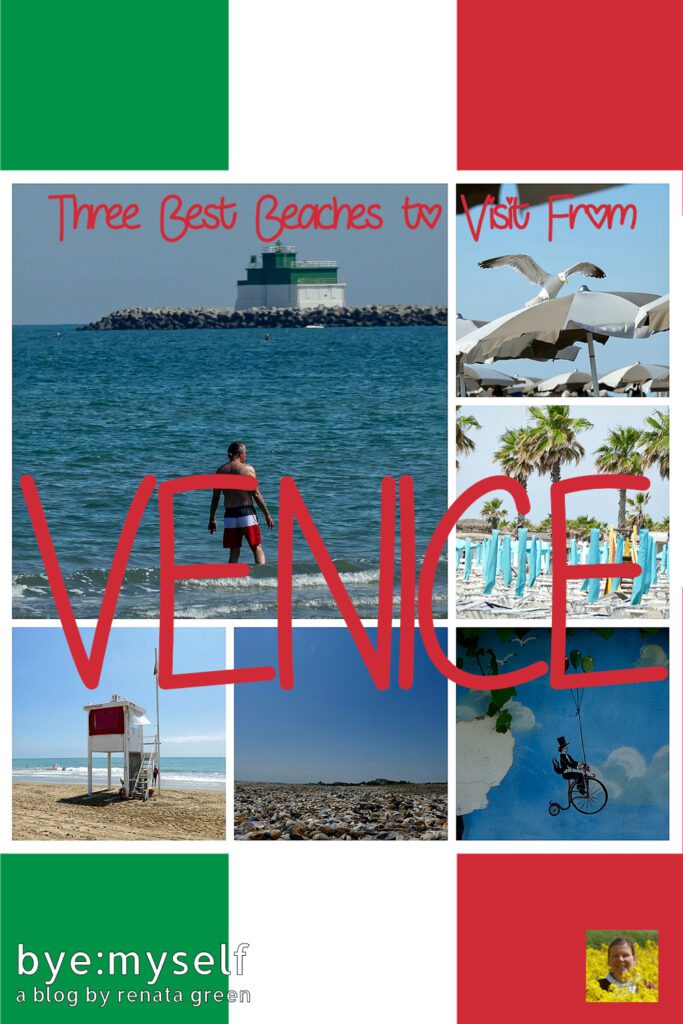
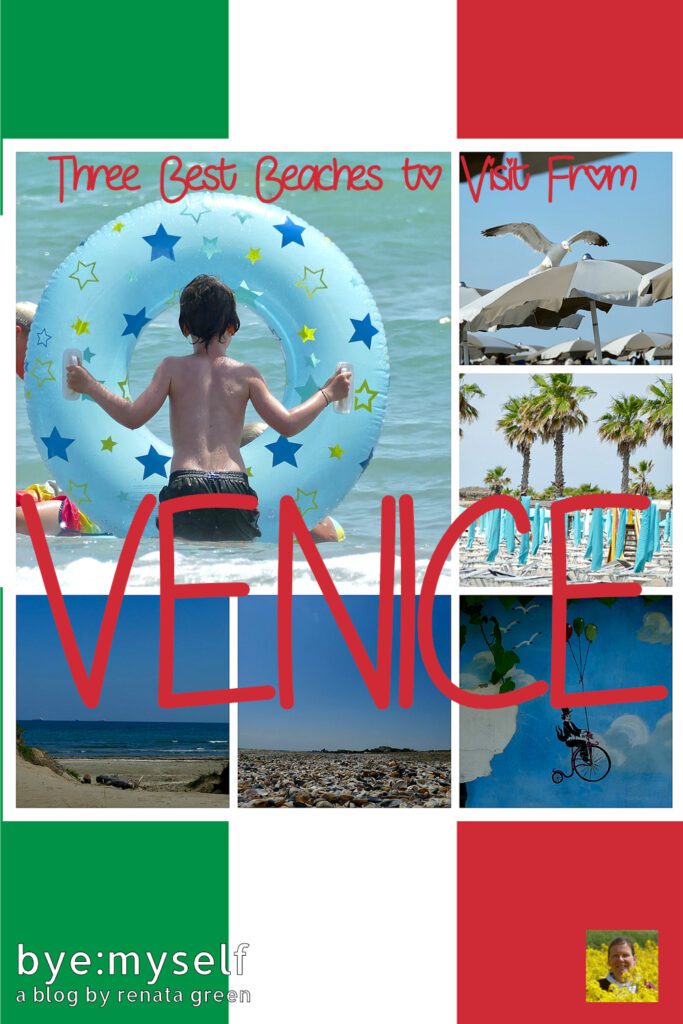
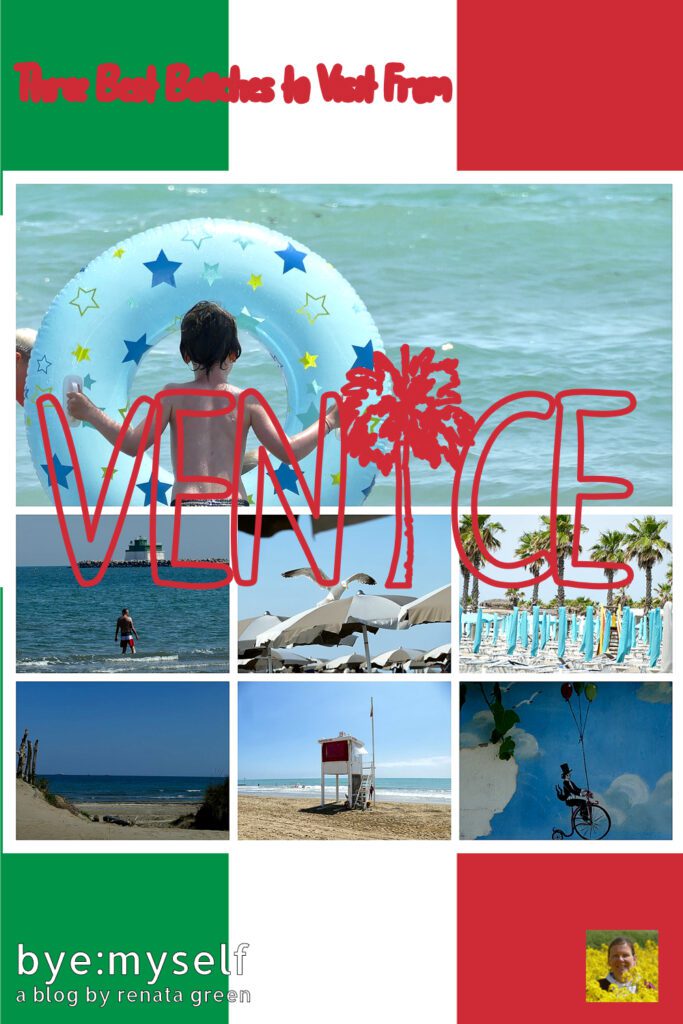
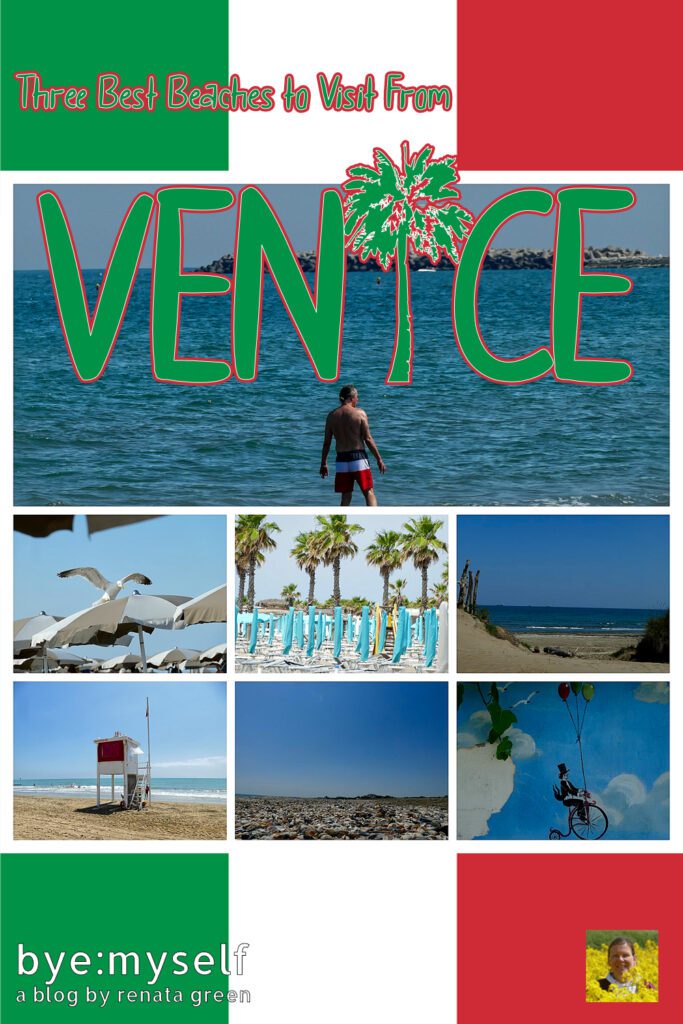
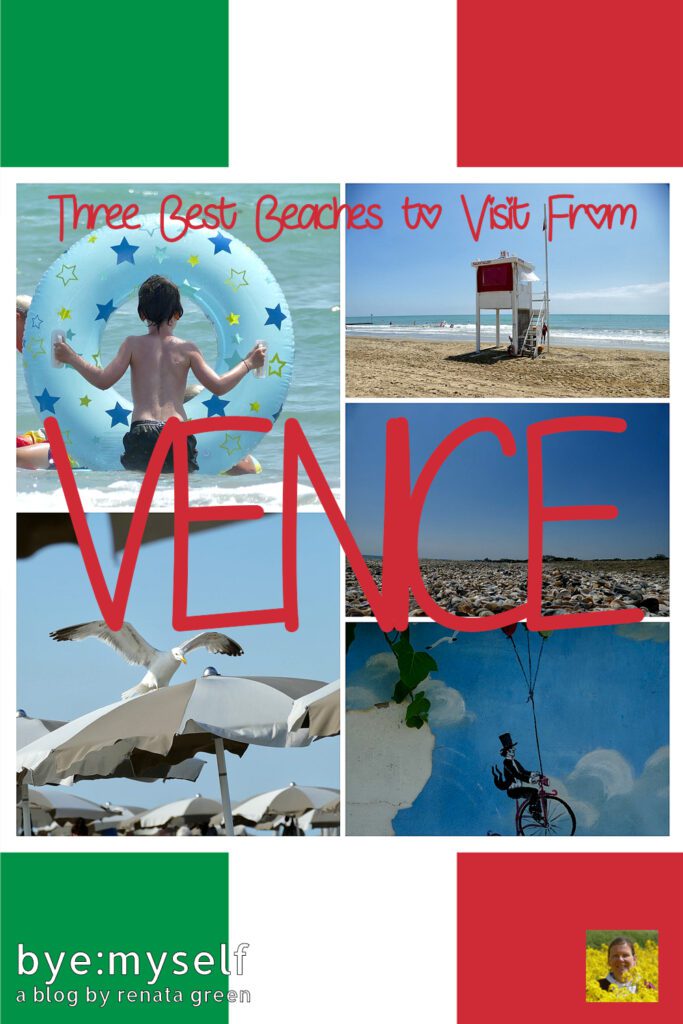
* This is an affiliate link. Hence, If you book through this page, not only do you get the best deal. I also get a small commission that helps me run this blog. Thank you so much for supporting me!

